What life was like in Soviet Belarus (PHOTOS)

A harvest festival in the Belorussian Soviet Socialist Republic, 1987
Yevgeny Koktysh/SputnikThe architectural landscape of Minsk, the capital of Belarus, still recalls the Soviet era: spacious squares, stately Stalinist buildings, practically no outdoor advertising or stalls, and old Soviet street names.
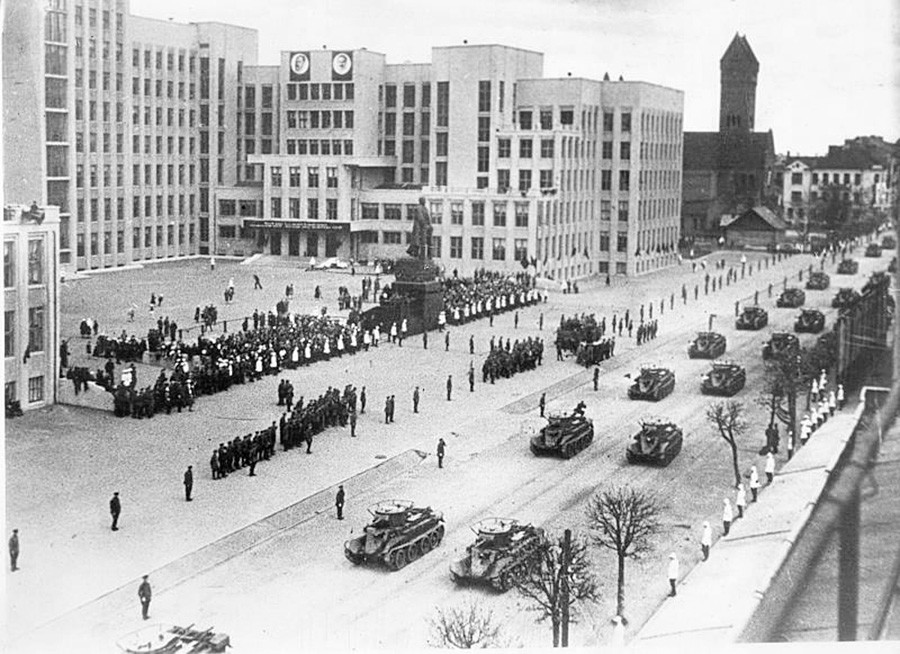
Soviet tanks on Lenin (now Independence) Square, Minsk, 1935
MAMM/MDFPolish-Lithuanian heritage
Historically, part of Belarus belonged to the Polish-Lithuanian Commonwealth, one of the most powerful and populous countries in Europe in the 16th-17th centuries. This page of history left a legacy of fortresses and Catholic churches. The final contours of the Belarusian SSR were determined only after WWII, when the important city of Bialystok was transferred back to Poland. The Constitution of the Belarusian SSR of 1927 was published in the four languages officially recognized by the state: Russian, Belarusian, Polish and Yiddish. The new constitution of 1937 dispensed with Polish and Yiddish.

In Soviet times, the 16th-century Nesvizh Castle housed a sanatorium, photo of 1986
Evgeny Kozyulya/TASSAs for Lida Castle (14th century), from the early 20th century until 1939 it hosted a stadium for the Polish soccer team. When this territory became part of the USSR, the castle ruins were left alone but the team was moved out, although children continued to kick soccer balls against the ancient walls.
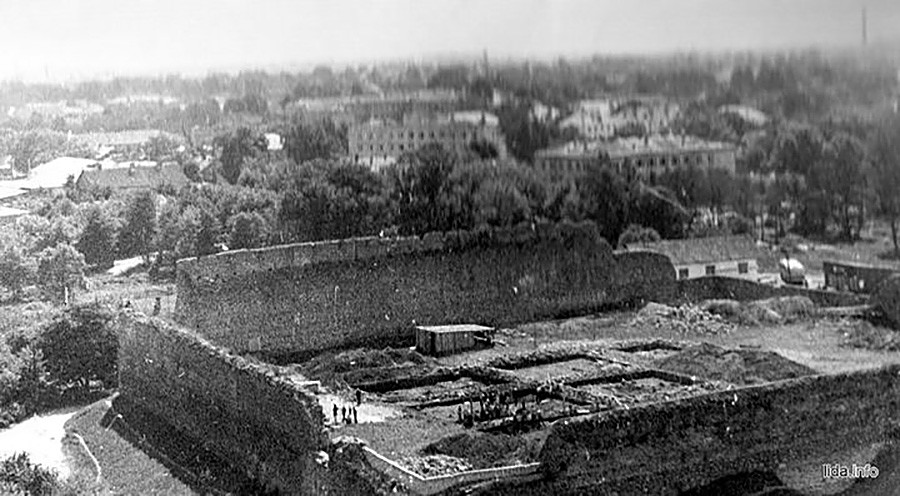
The Lida Castle
No courtesyDuring WWII, the Germans used the 16th-century Mir Castle as a Jewish ghetto; then after liberation, the Soviets turned it into an art and craft artel. Only in the late 1970s–early 1980s was the castle restored.
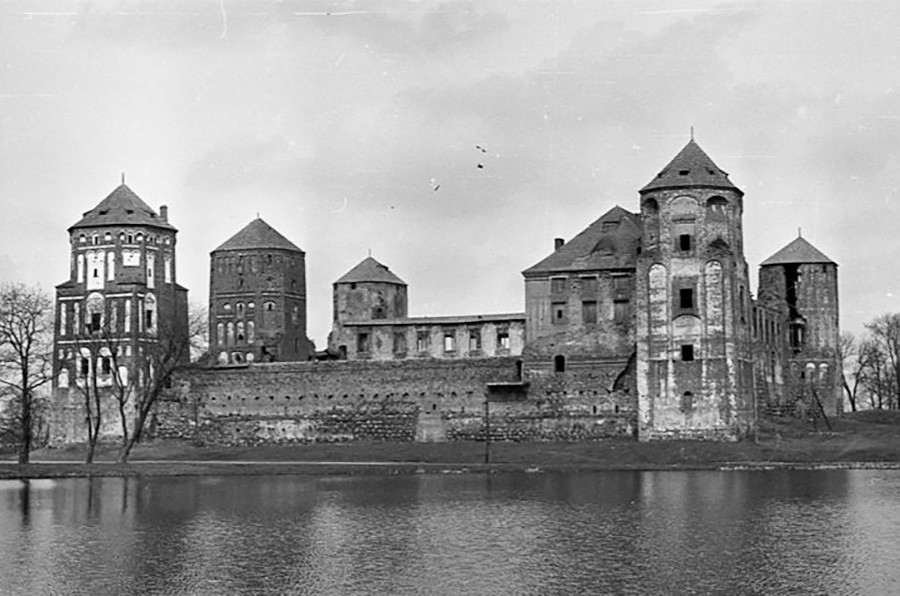
The 16th-century Mir Castle, photo of 1978.
Archive photoThe Red Church (Church of Saints Simeon and Helena) in Minsk was built in 1905. In Soviet times, it was converted into a film studio, then a cinema cultural center and museum. After the fall of the USSR, it reverted to being a church.
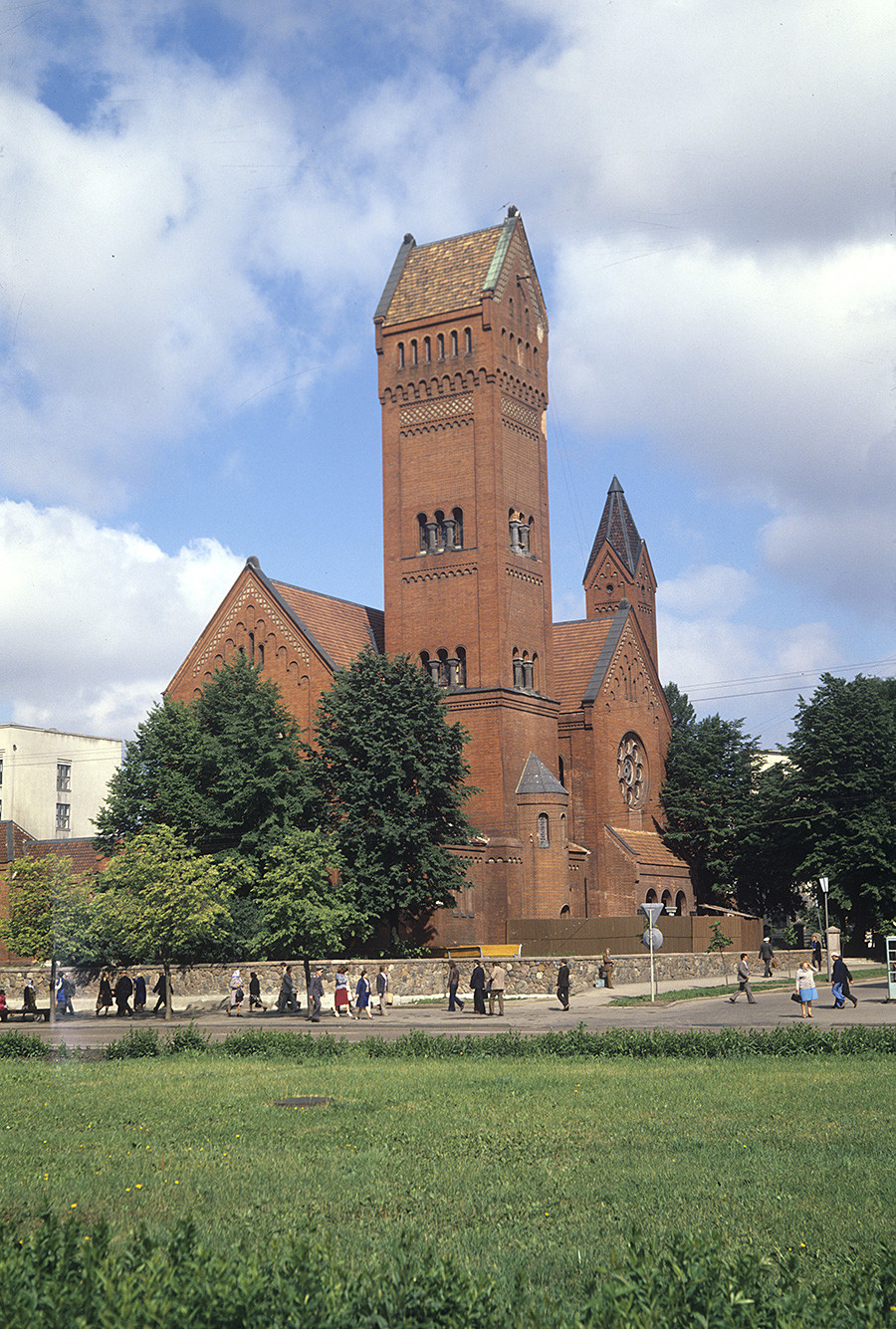
Church of Saints Simeon and Helena, photo of 1983
Gurov/SputnikIn the Soviet era, the Cathedral of the Holy Name of Mary (built 1700) in Minsk was home to the Spartak sports club and used as a training ground. The two towers were demolished but restored after the collapse of the USSR.
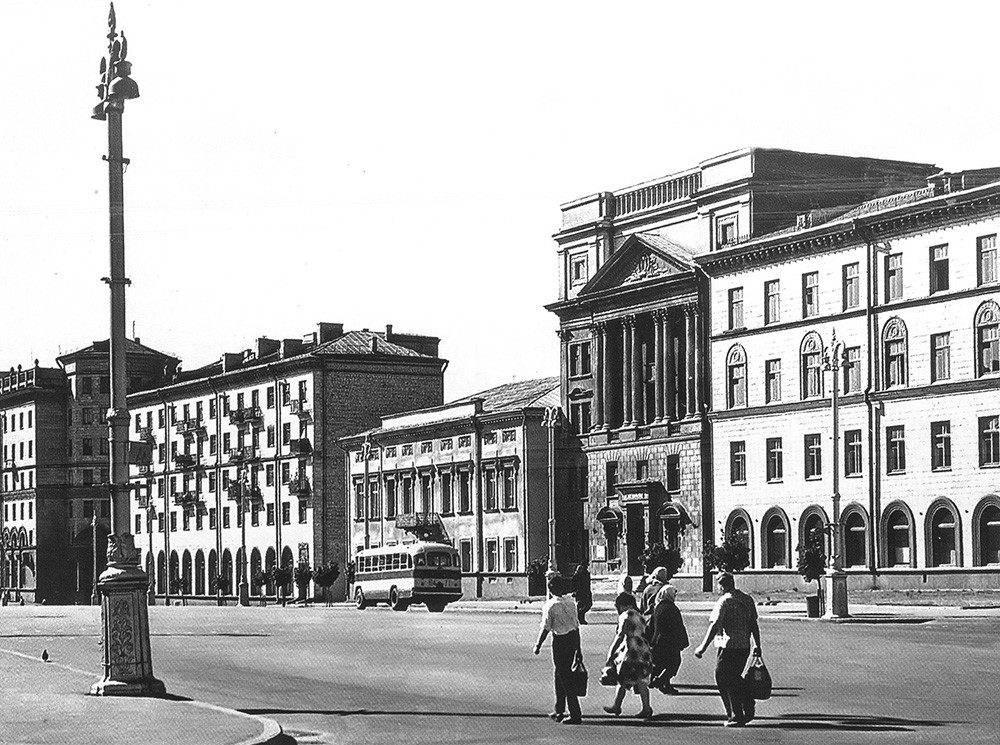
The Cathedral of the Holy Name of Mary (second building from right)
Archive photoThe main battlefield on the Eastern Front of WWII
Perhaps no other Soviet republic suffered as much as Belarus in WWII. On top of the military losses, the conflict cost the lives of more than 2 million civilians. The republic stood in the way of Heeresgruppe Mitte (Army Group Center), the German division assigned to take Moscow. In June 1941, it was completely captured by fascist troops. One of the first attacks was on Brest Fortress, which Soviet soldiers heroically defended for nearly a month.
A particularly devastating fate befell the village of Khatyn (not to be confused with Katyn). Almost the entire population was massacred as part of a reprisal operation. In 1969, the Unbowed Man Memorial Complex was installed there, depicting the only adult survivor and his dead son.
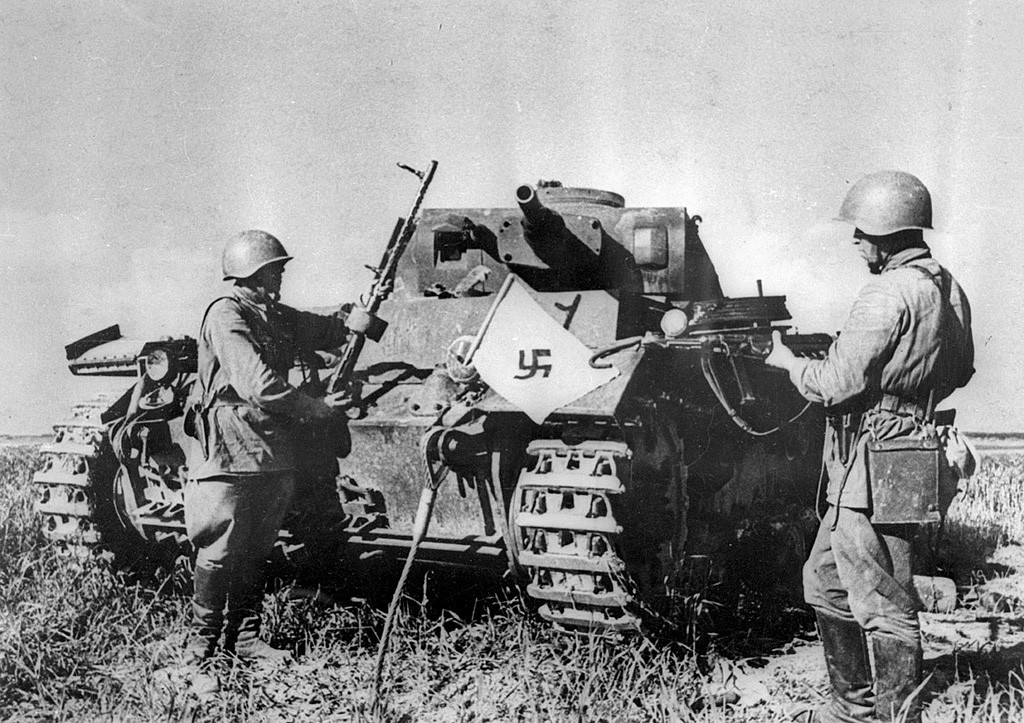
Soviet soldiers next to a wrecked German tank, Mogilev, 1941
Pavel Troshkin/MAMM/MDF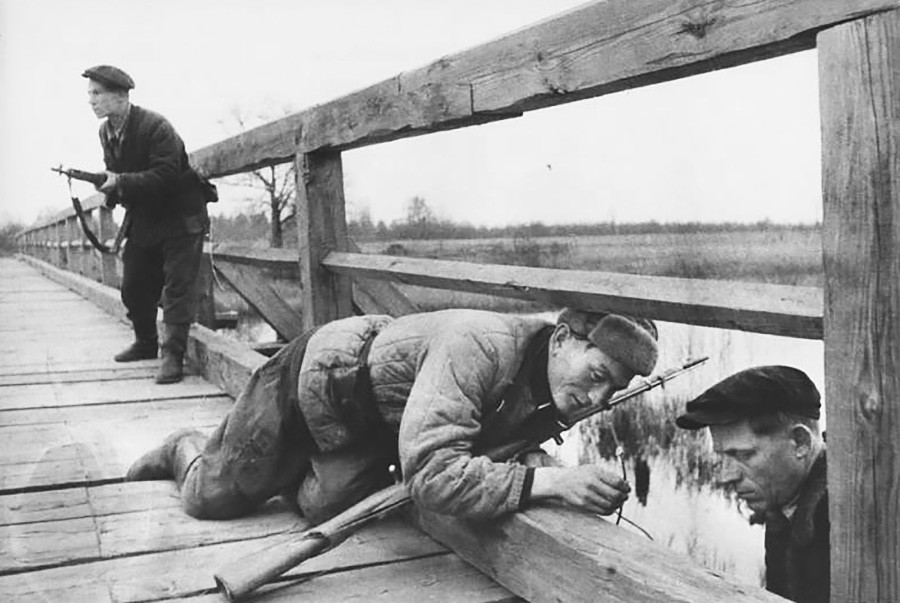
Belarusian partisans blow up a bridge, 1943
Mikhail Trakhman/MAMM/MDF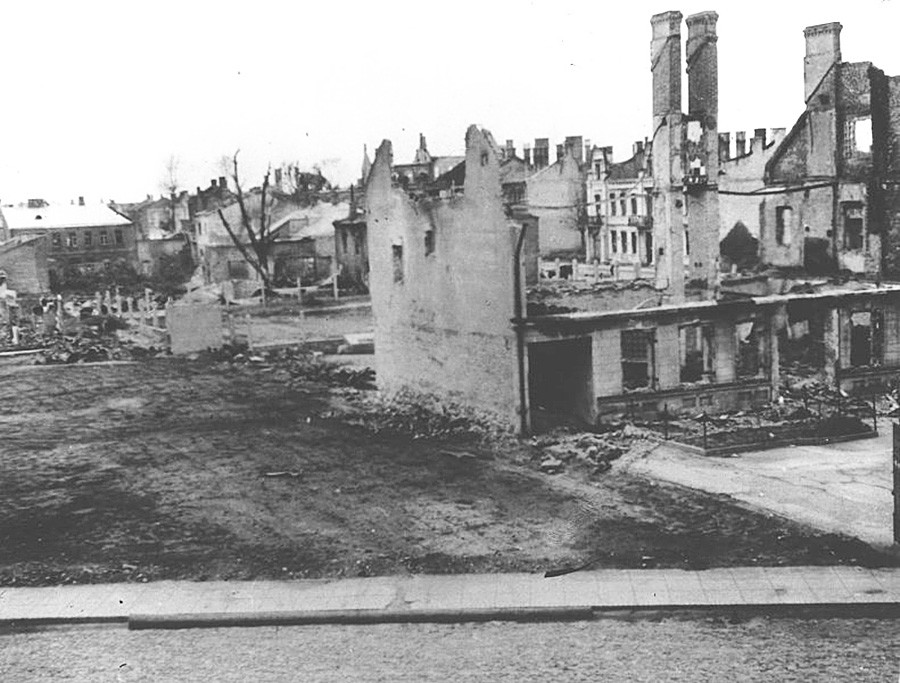
Minsk in ruins, 1941-42
Kurt Wagner/MAMM/MDF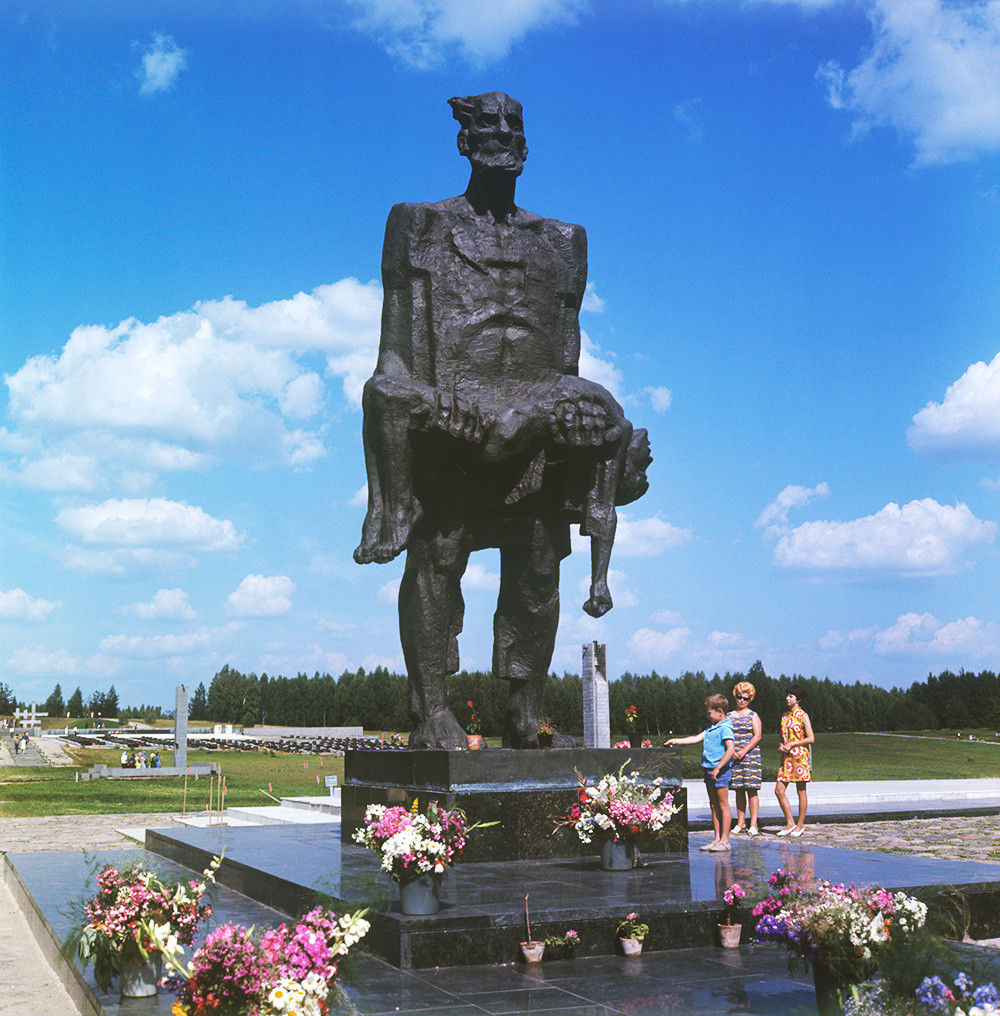
Khatyn Memorial Complex, 1974
A.Gruzdev/Sputnik
Brest Fortress Hero Memorial Complex, Belarus, 1972
V.ShiyanovskyIndustrialization
The main industries of the Belarusian SSR were machine-building, metallurgy and energy. A genuine miracle of engineering was the MAZ heavy-duty dump truck, manufactured by the Minsk Automobile Plant, and its successor BelAZ, made by the Belarusian Automobile Plant. They were used for quarrying and mining, and for building hydroelectric power stations, dams and many other complex works. The machines were also popular abroad, and are still made and exported to this day, including to Russia. The Minsk Tractor Plant also had huge production volumes.
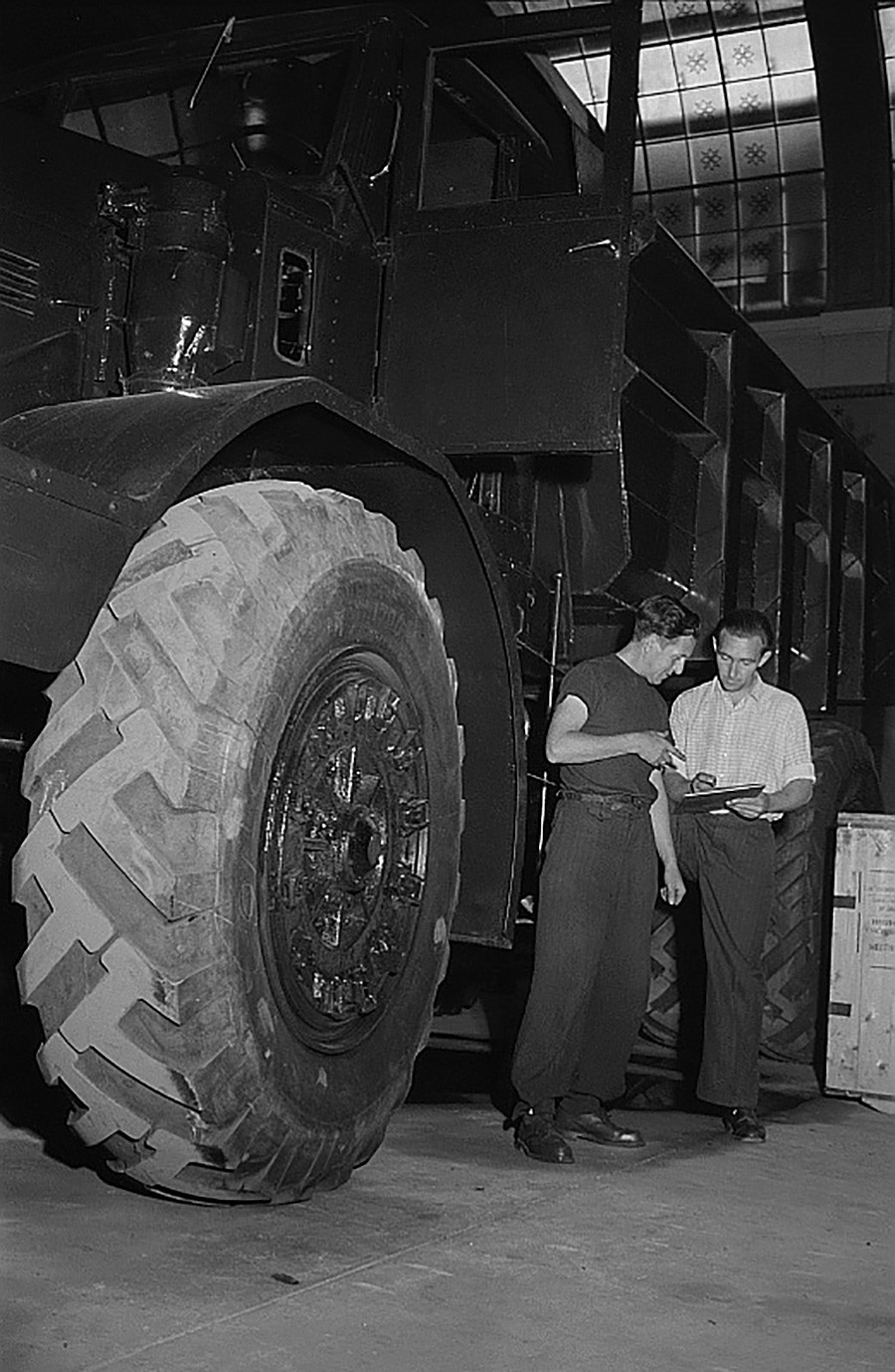
Wheel of a MAZ-525 dump truck, 1953
Deutsche Fotothek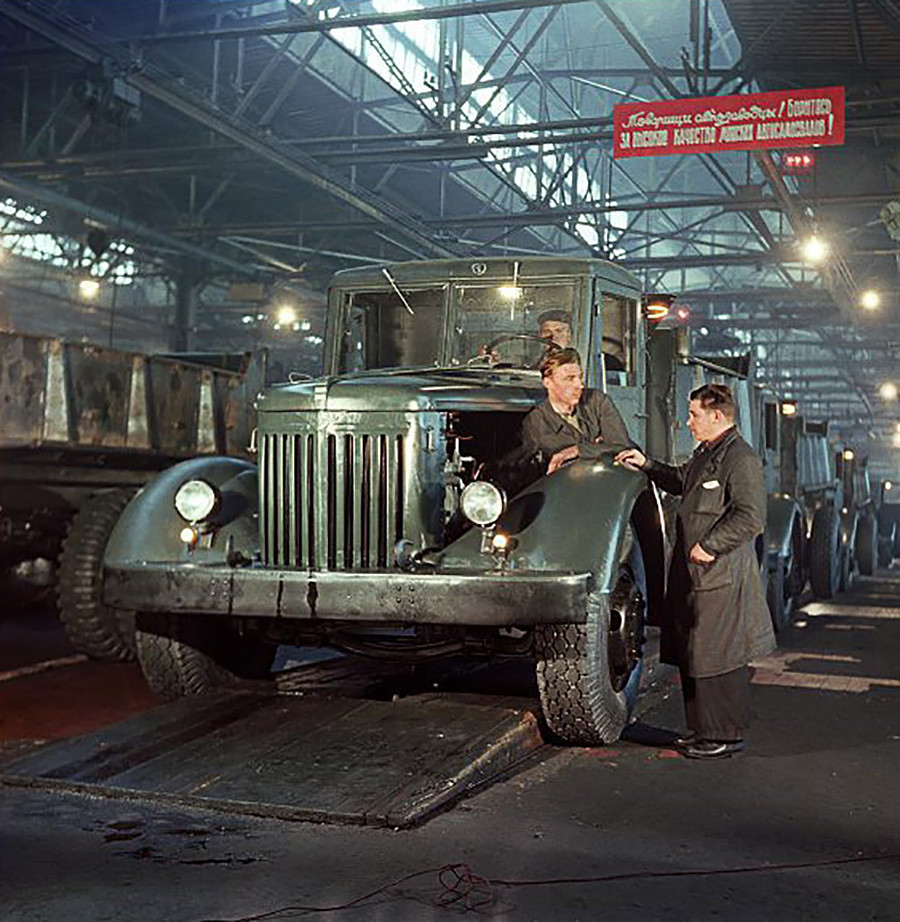
Dump truck on the conveyor of the Minsk Automobile Plant, 1953
Mikhail Savin/MAMM/MDF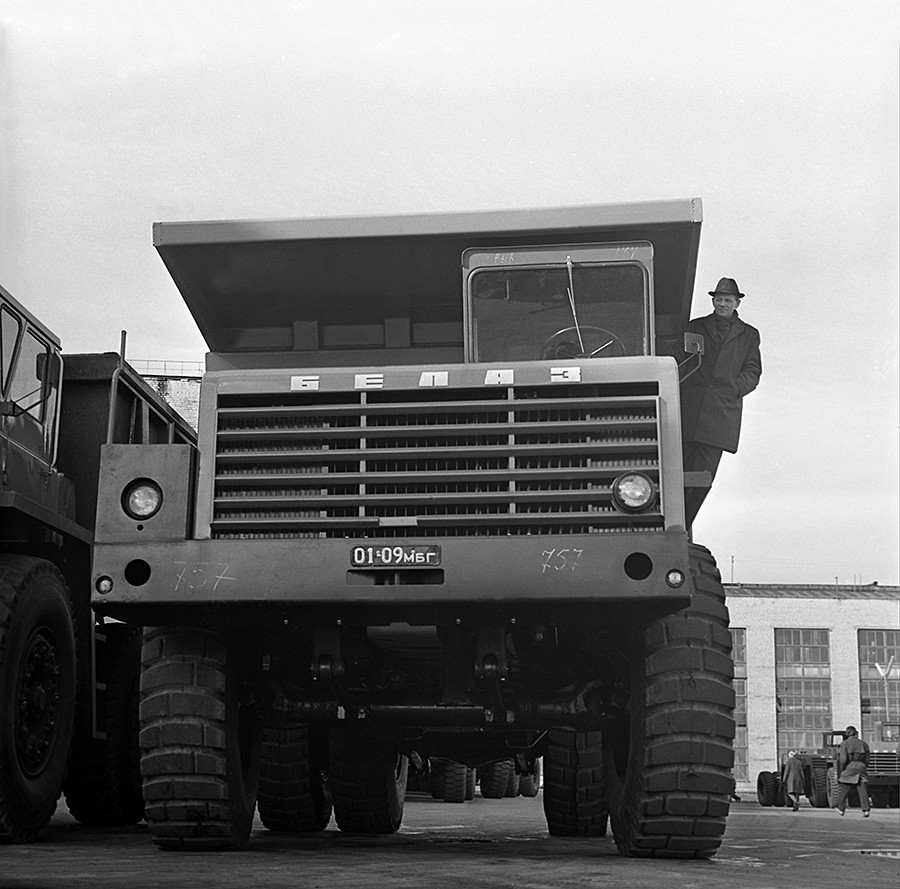
BelAZ-548 heavy-duty dump truck, made by the Belarusian Automobile Plant.
V.Mezhevich/Sputnik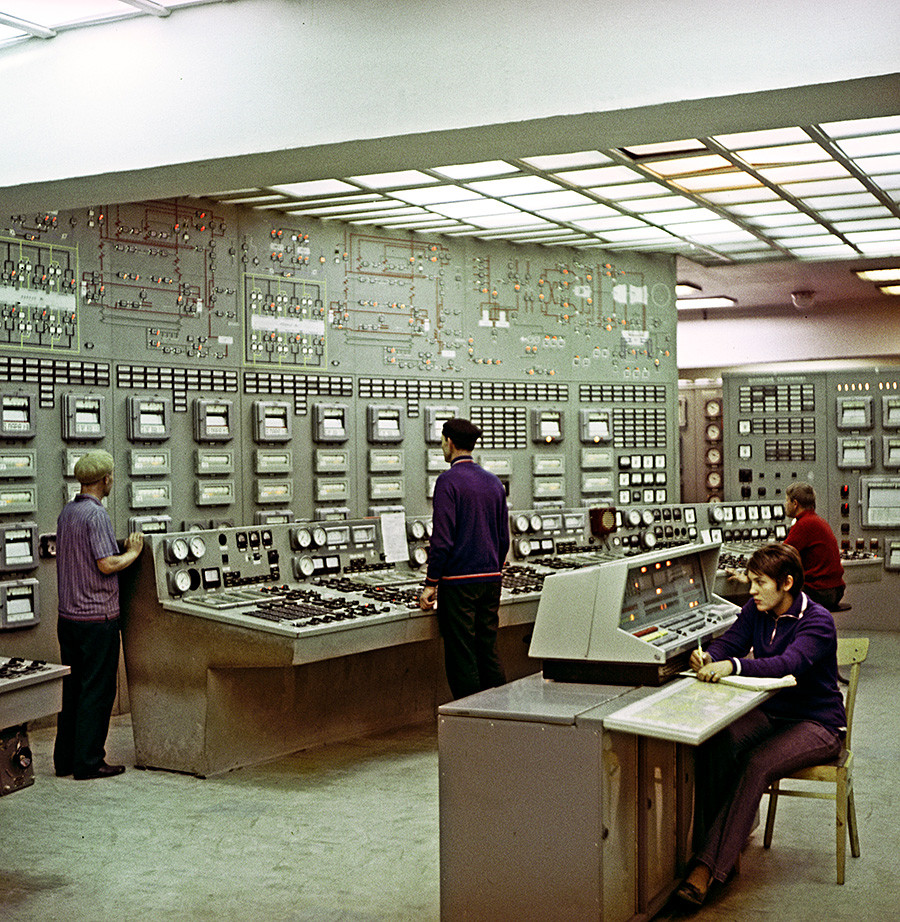
Control panel of the Lukoml Thermal Power Plant in the city of Novolukoml, Belorussian SSR, 1972
V. Shiyanovsky/Sputnik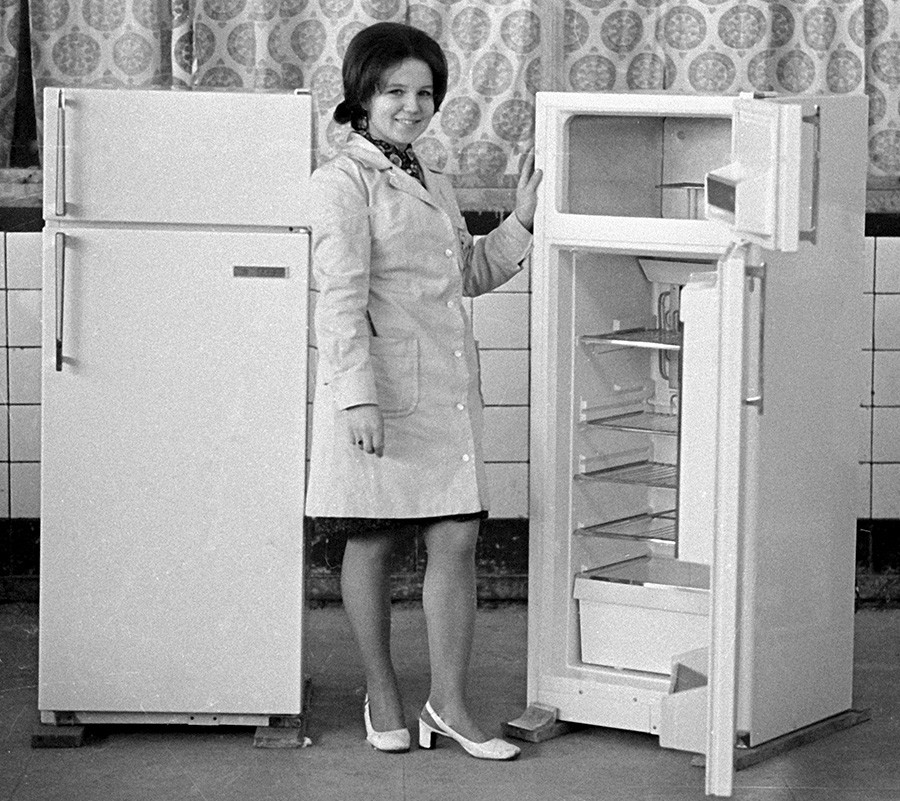
Employee of the Minsk Refrigerator Plant demonstrates the Minsk-7 refrigerator, 1973. Half of all Soviet homes had one.
Yuri Ivanov/SputnikPotato country
There are many jokes about Belarusians and potatoes, which are grown and consumed in vast quantities in Belarus due to the properties of the native soil. The humble potato repeatedly saved the population from hunger when other crops failed. And the national cuisine boasts numerous potato dishes, the most famous being draniki (potato pancakes).
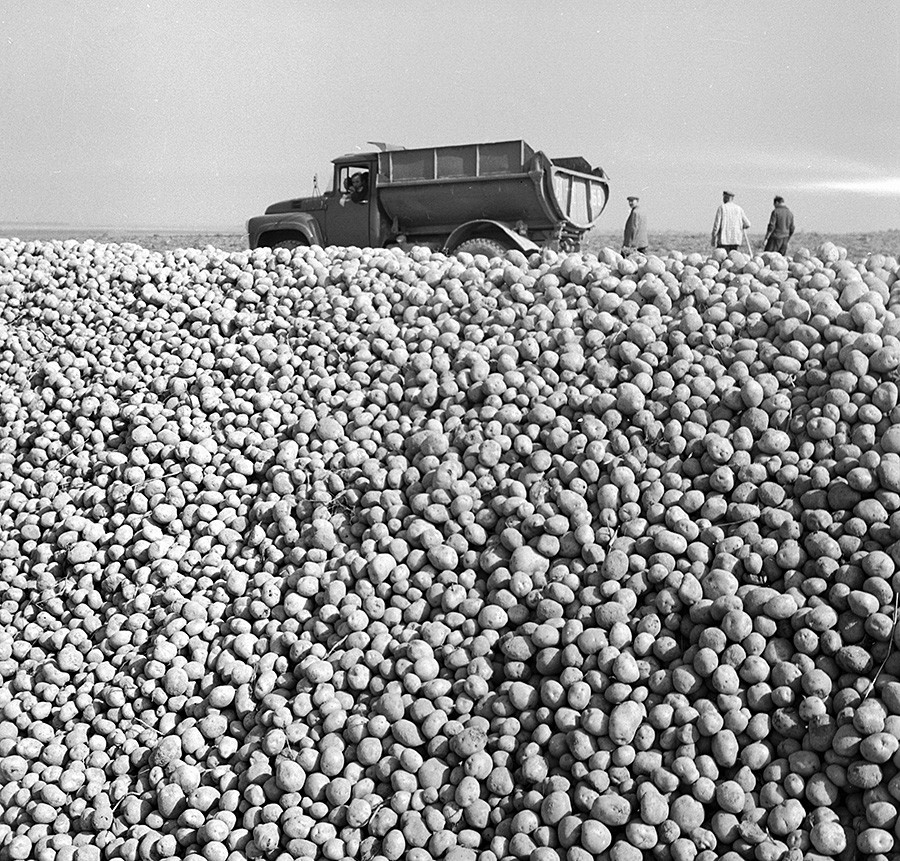
Potato harvest at a collective farm, 1971
Vsevolod Tarasevich/Sputnik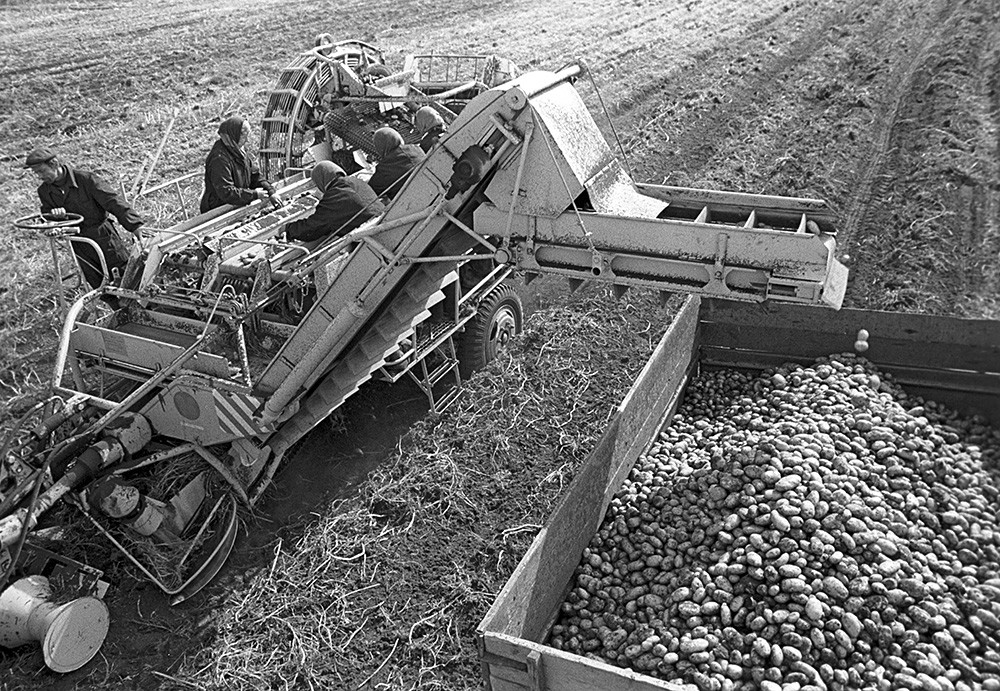
Potato harvest, 1973
Yury Ivanov/Sputnik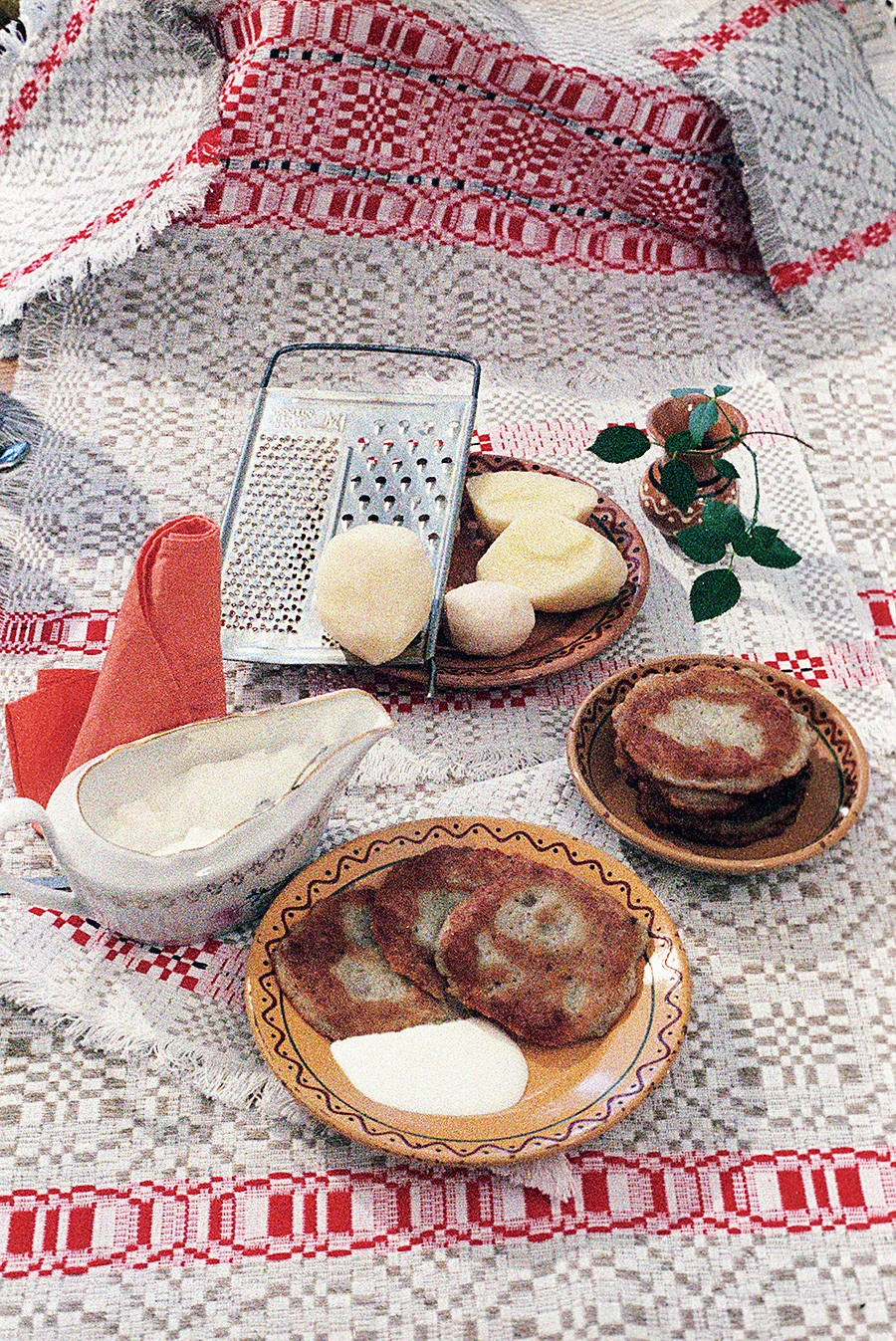
Potato pancakes, 1987
Evgeny Koktysh/Sputnik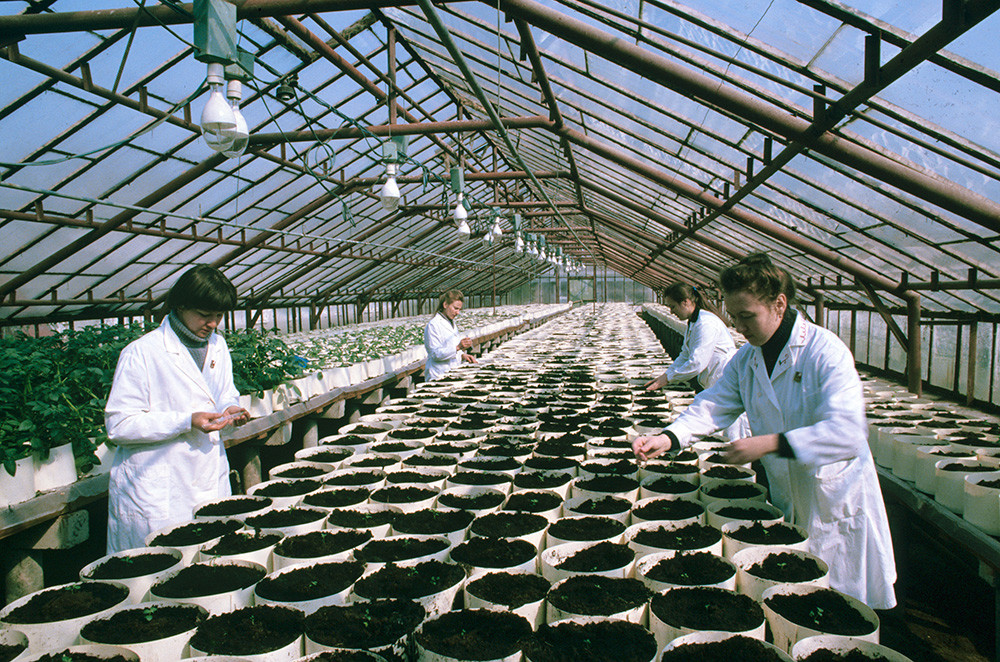
Belarusian Order of the Red Banner of Labor, Research Institute for Potato Farming and Horticulture. Inside potato-growing hothouses, 1984
Evgeny Koktysh/SputnikEveryday life
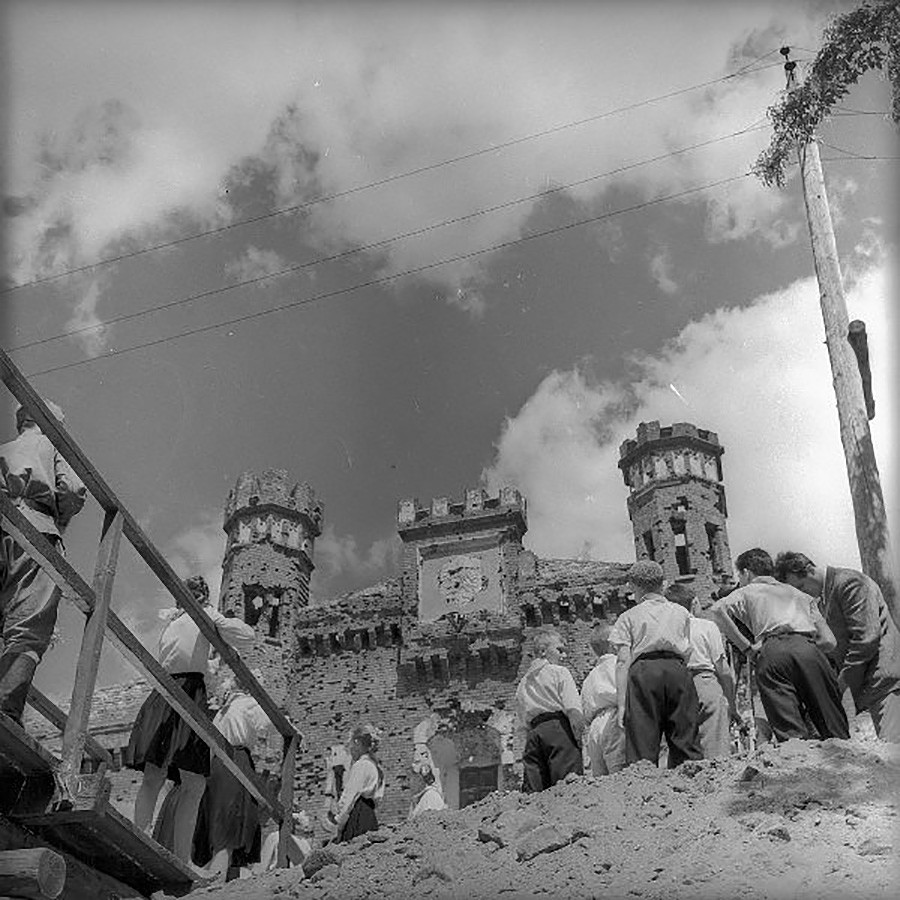
Pioneers at Brest Fortress, 1960s
Alexander Steshanov/MAMM/MDF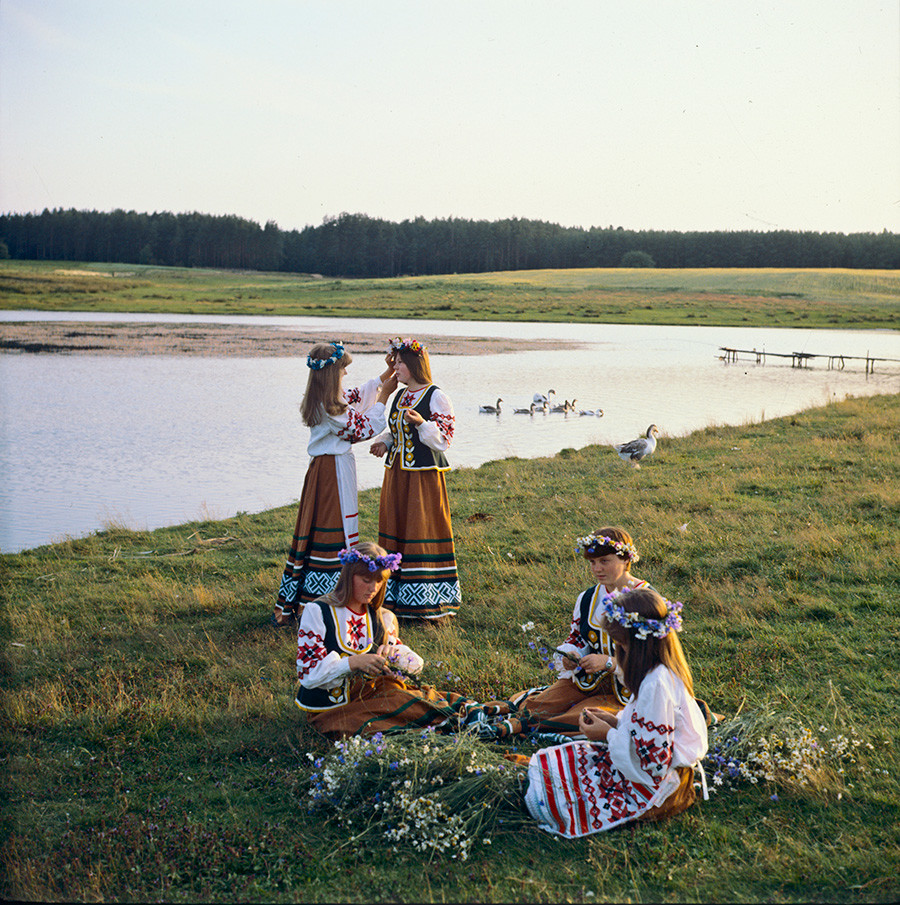
Ivan Kupala Day at the State Museum of Folk Architecture and Life outside Minsk, 1989
S.Ivanov/Sputnik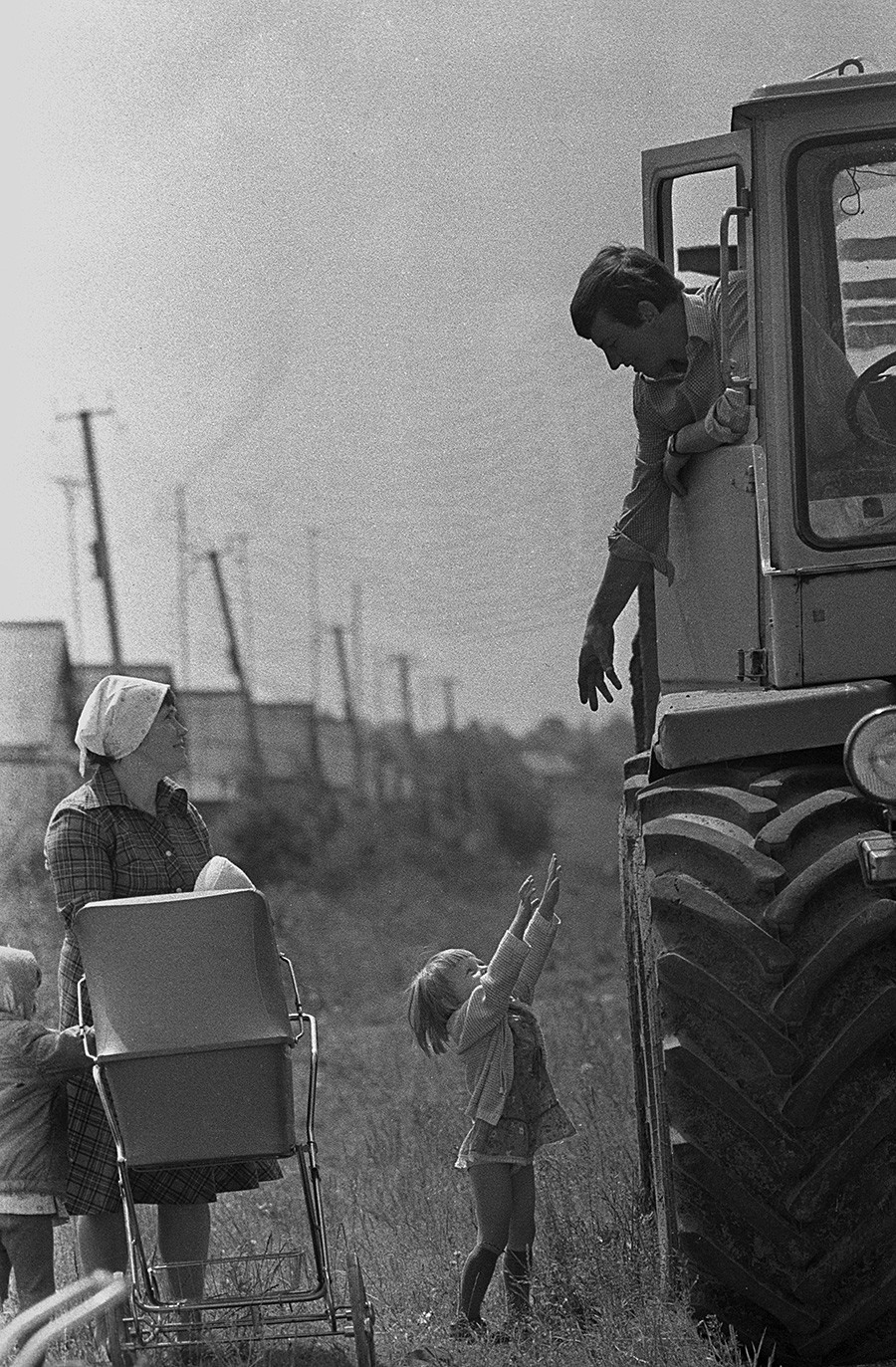
Machine operator at the Soviet Belarus Collective Farm returns home from the field, 1987
Vladimir Langranzh/Sputnik
A bison is a symbol of Belovezhskaya Pushcha National Park, 1989
Eduard Kobyak, Vladimir Shuba/TASS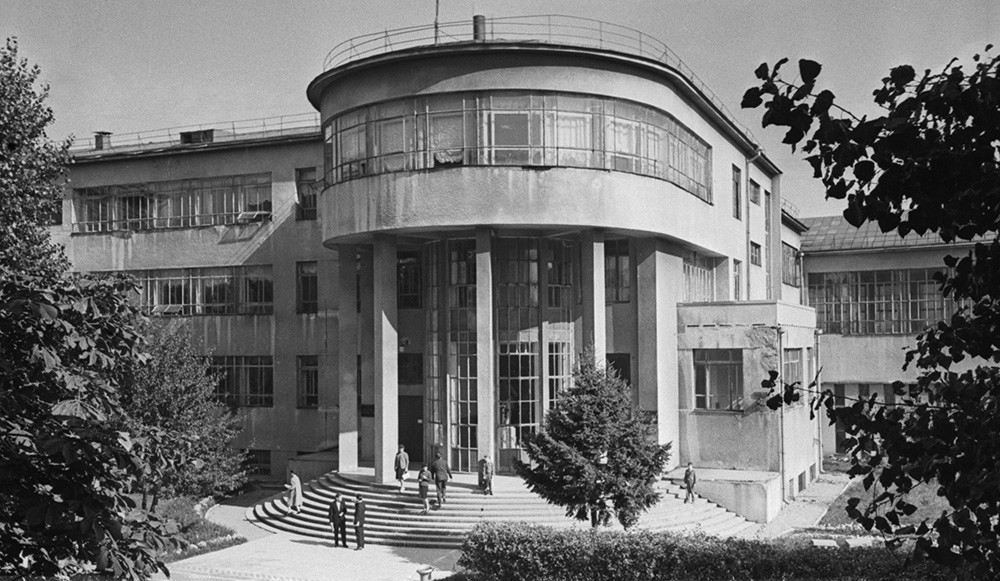
The State Library of the Byelorussian SSR, a masterpiece of constructivist architecture, 1962.
Viktor Shandrin/TASS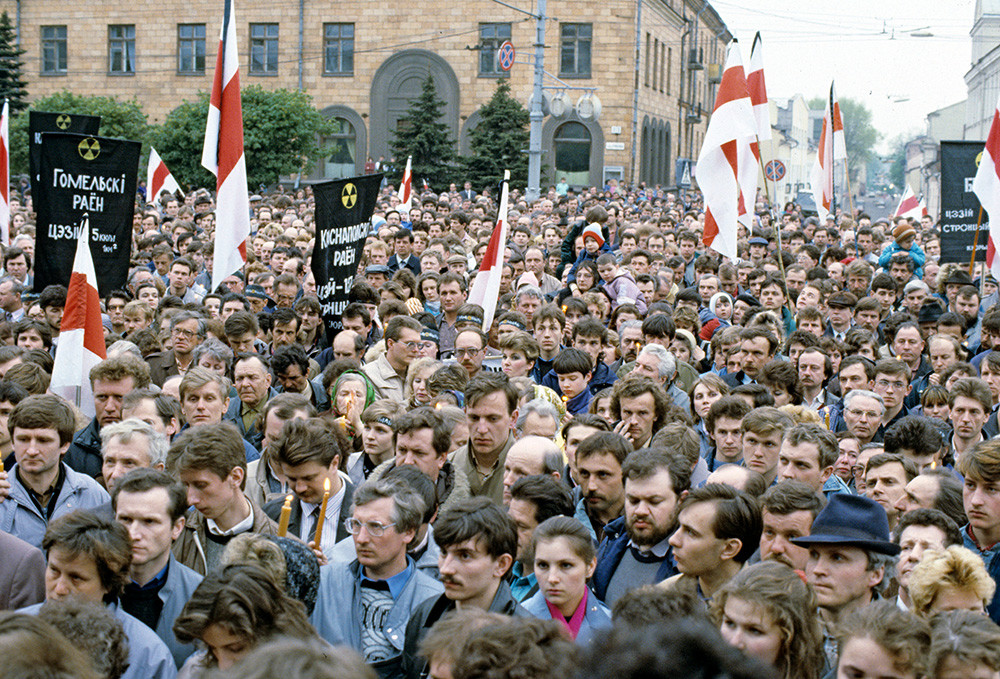
Memorial day for victims of the 1986 Chernobyl disaster, which occurred near the Belarusian border. The radiation spread far inside the country. Photo of 1990
Evgeny Koktysh/Sputnik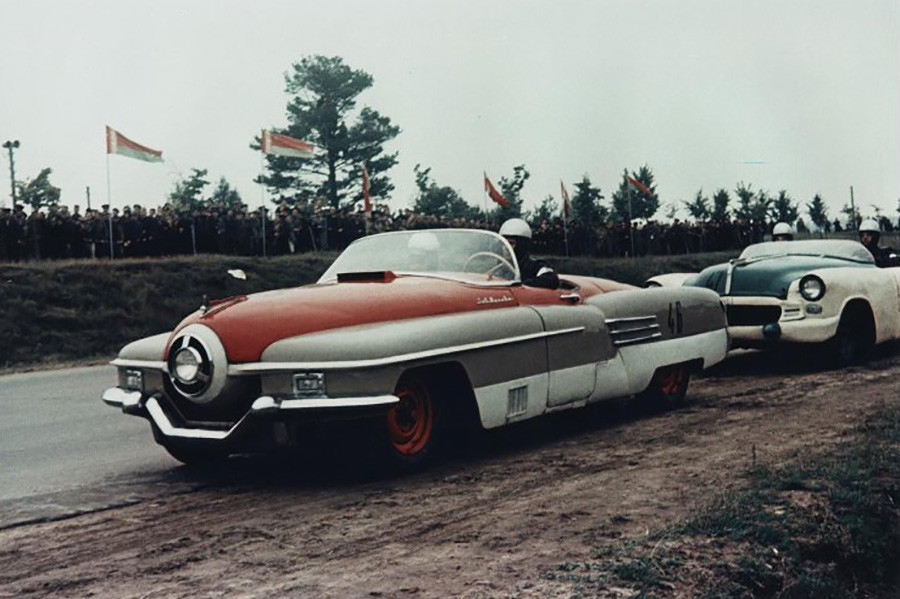
USSR Motor Racing Championship, 1956
Sergey Vasin/MAMM/MDF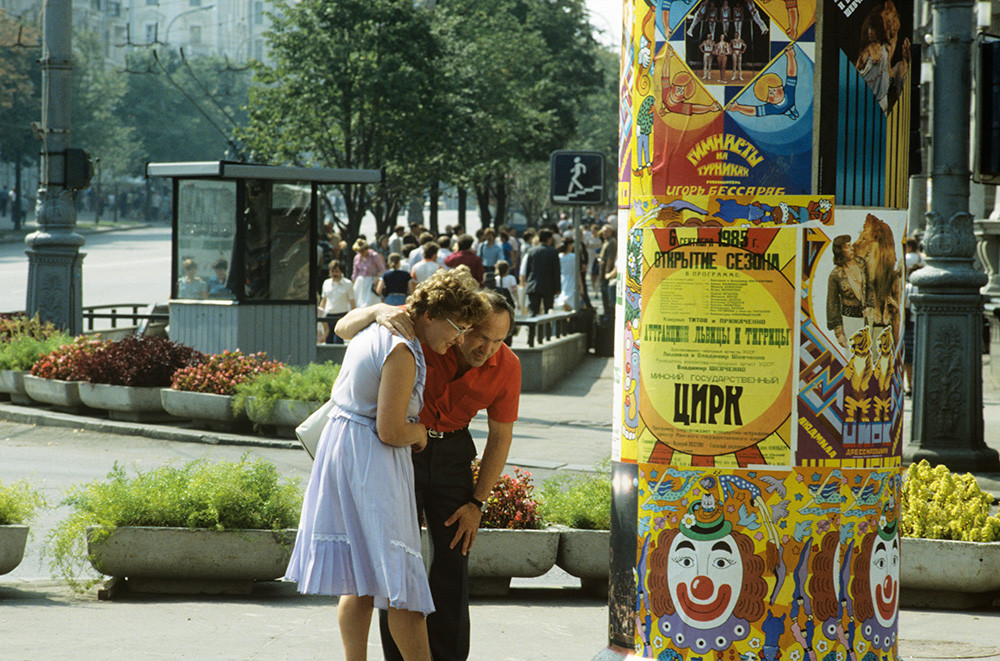
Minsk Circus posters, 1985
Evgeny Koktysh/Sputnik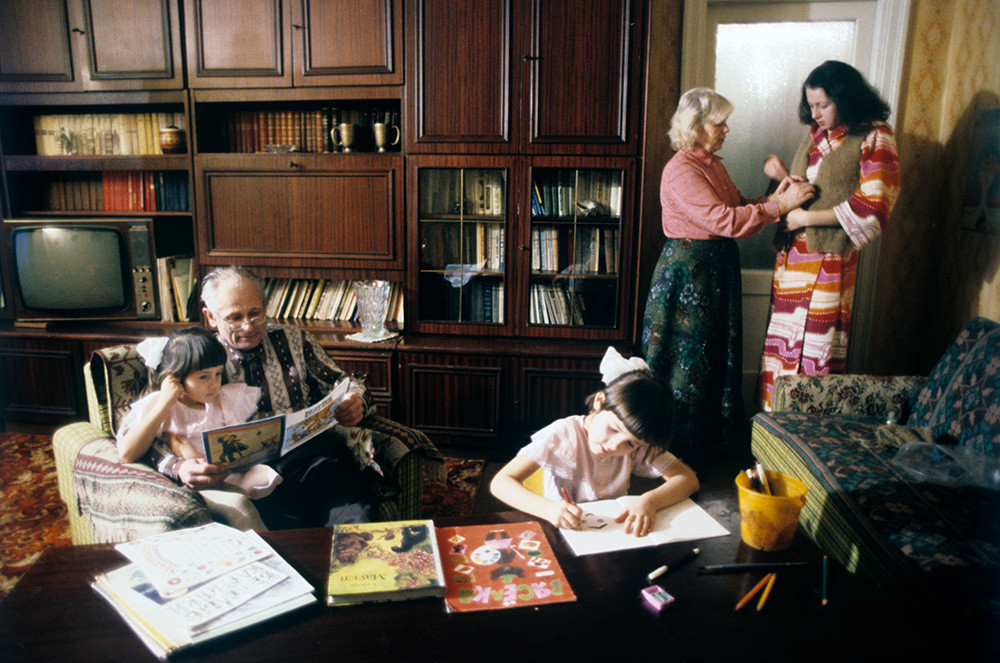
Apartment of a Belarusian woman employed at the Minsk Tractor Plant, 1982
Evgeny Koktysh/Sputnik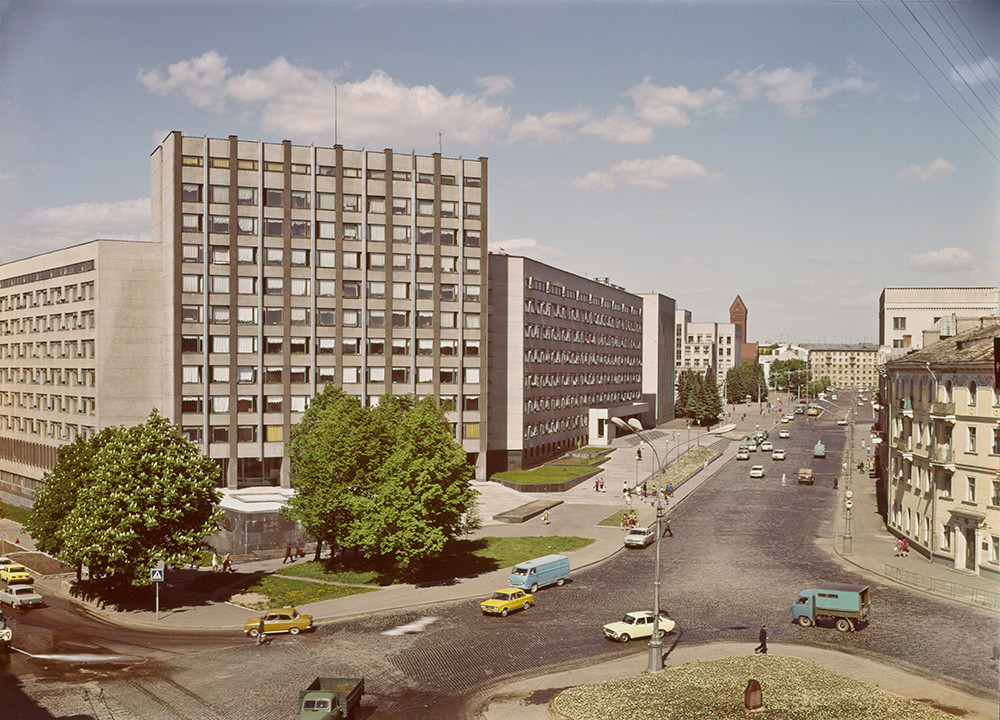
Sovetskaya Street, Minsk, 1980
G.Likhtarovich/Sputnik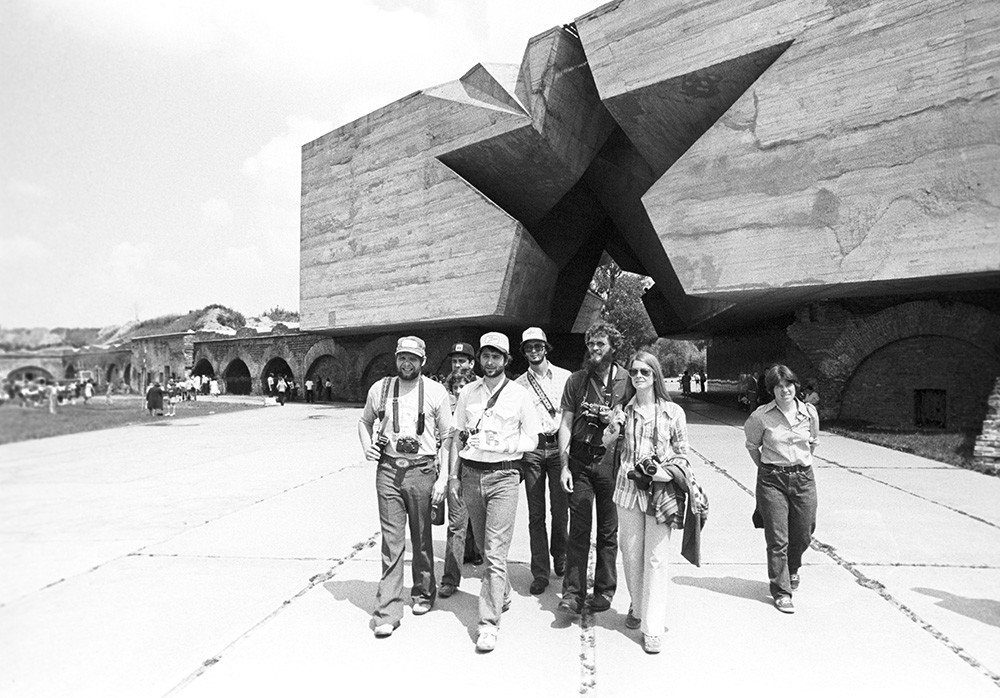
American delegation visiting the Brest Fortress Hero Memorial Complex in the Byelorussian SSR, 1978
Evgeny Koktysh/Sputnik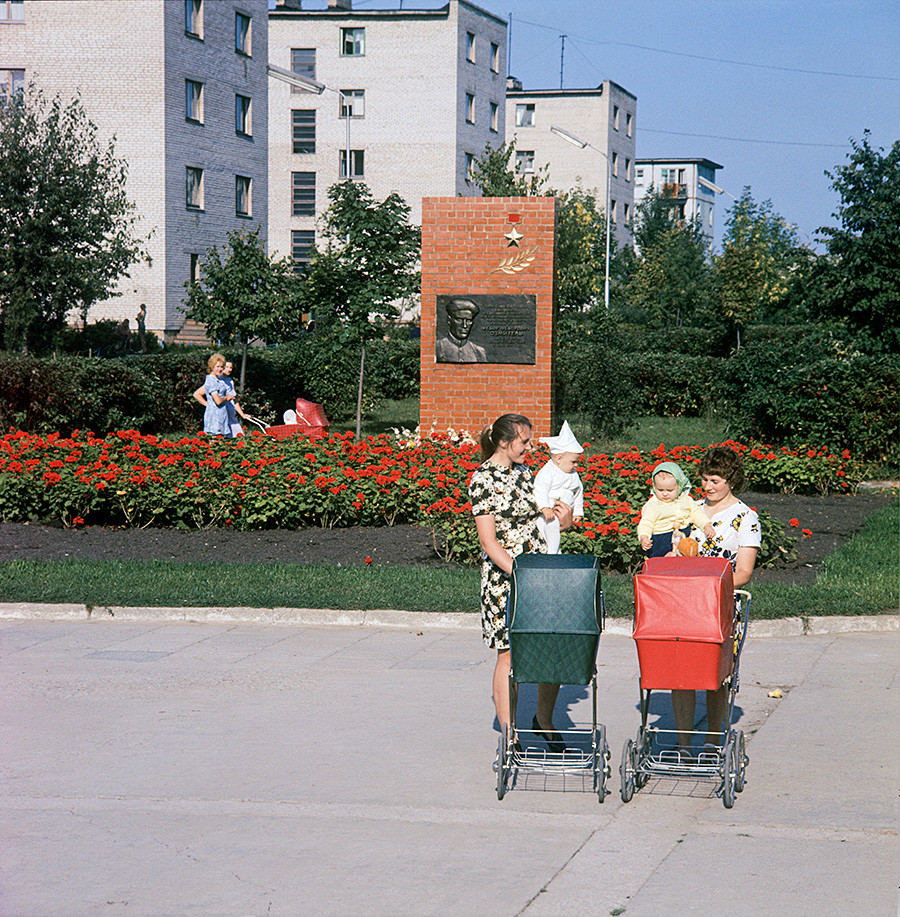
Young mothers in the city of Novolukoml, Vitebsk Region. In the background stands a monument to partisan commander F. Ozmitel, 1978
A.Tserlyukevich/Sputnik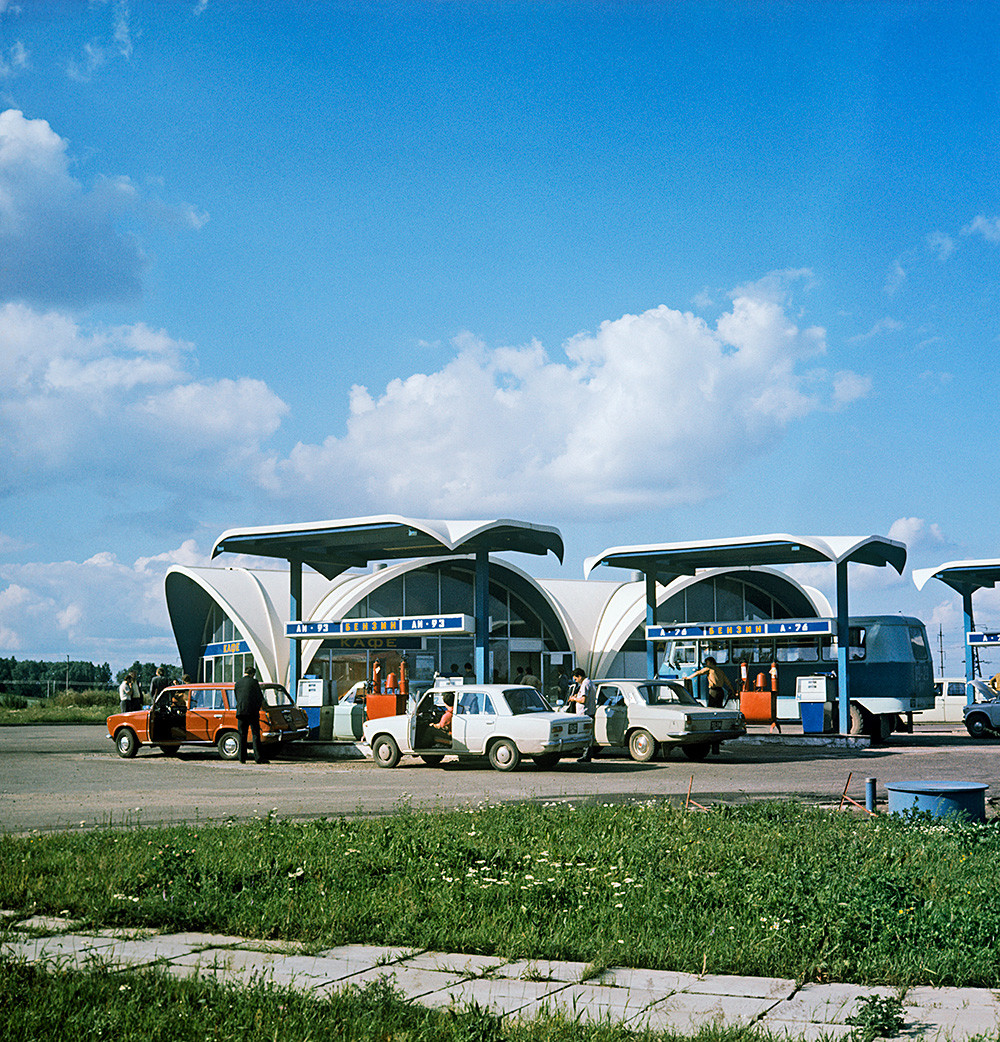
Gas station in Minsk, 1978
Valentin Shiyanovsky/Sputnik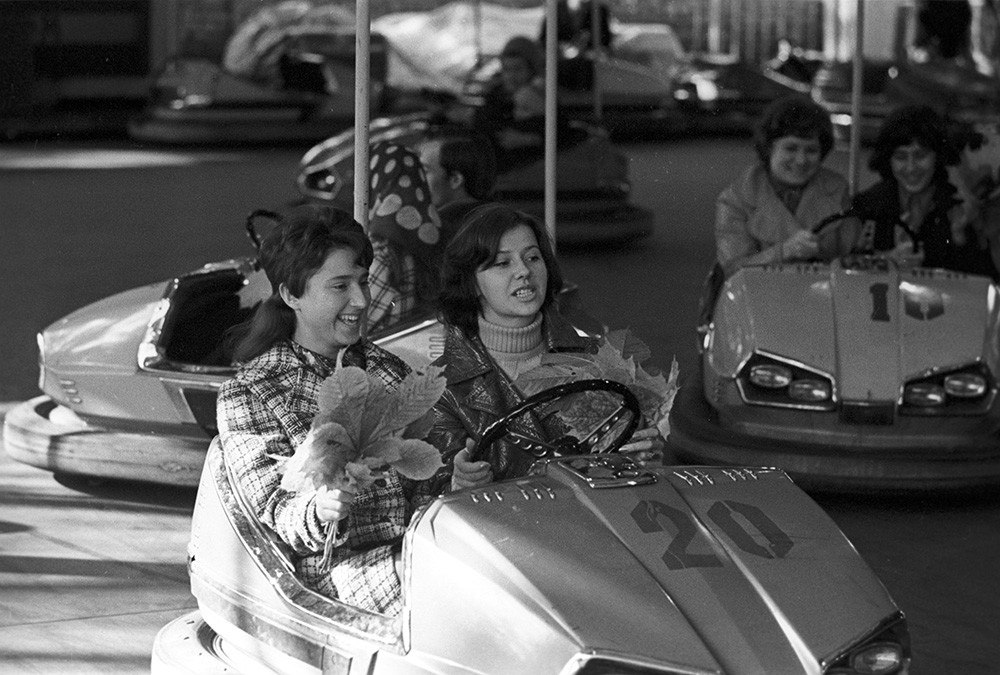
In Minsk Park of Culture and Rest, 1974
Yury Ivanov/Sputnik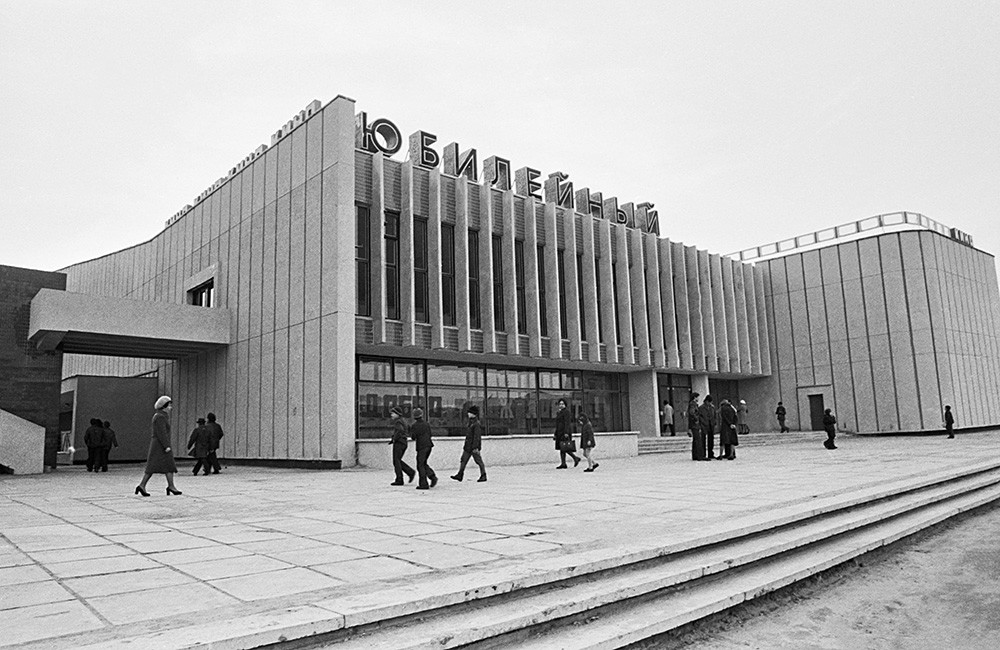
Yubileiny (Jubilee) movie theater in the city of Gomel, 1979.
Ivan Yudash/TASS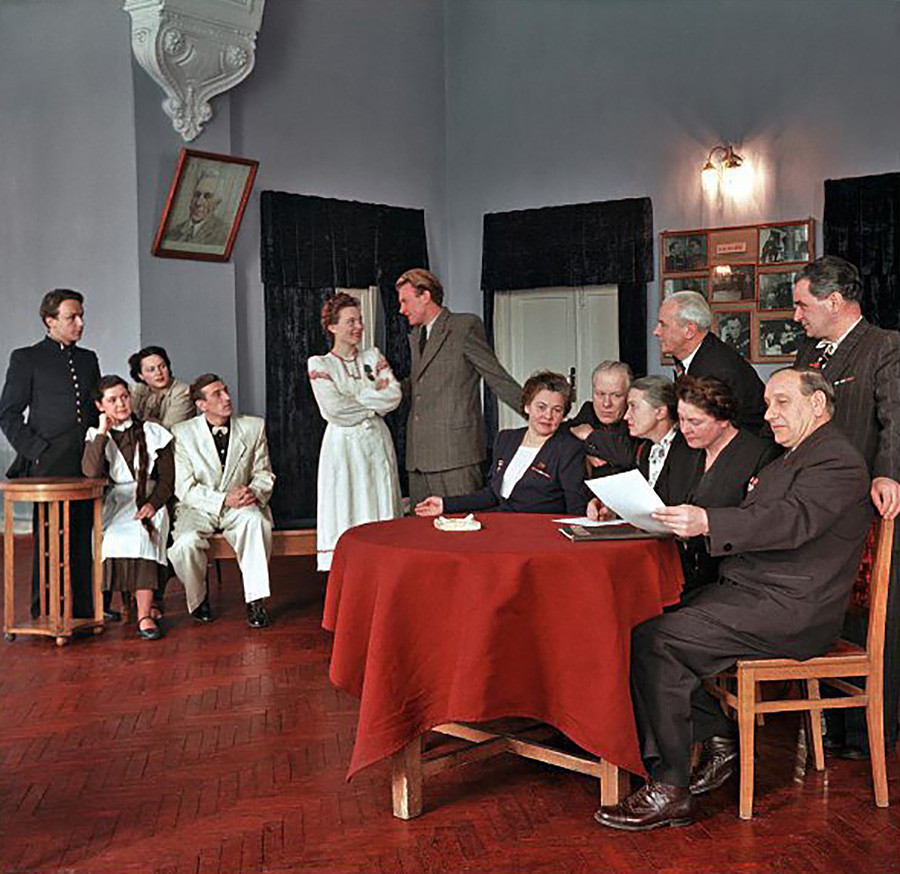
Watching young performers at the Yanka Kupala Belarusian Drama Theater, 1953
Mikhail Savin/MAMM/MDF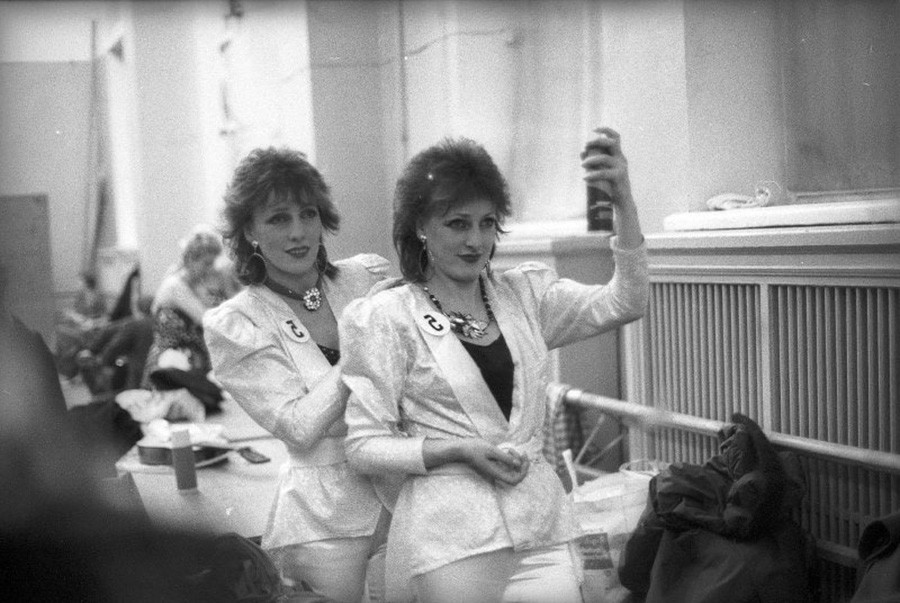
Hairdressing competition, 1970s
Alexander Steshanov/MAMM/MDF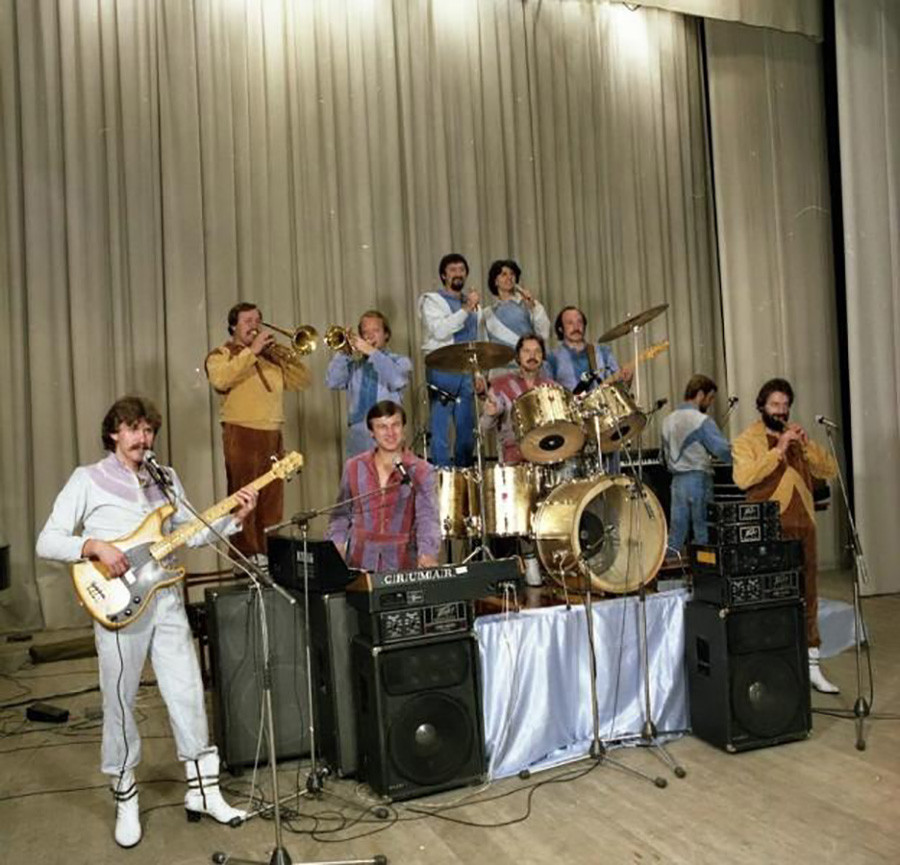
Belarusian ensemble Syabry, 1984
Semyon Mishin-Morgenstern/MAMM/MDF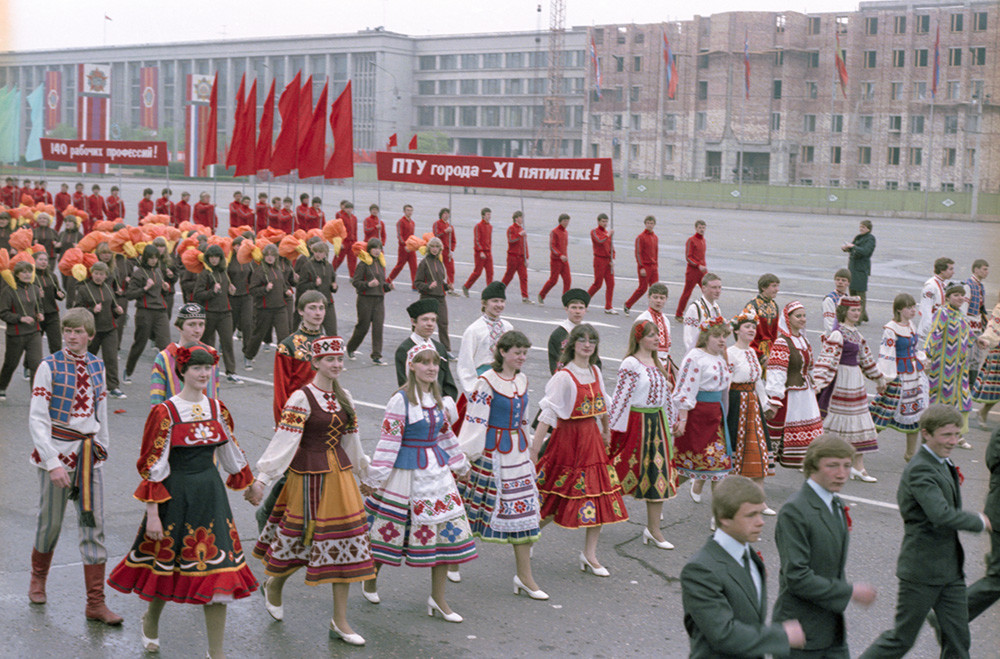
Minsk residents on a May Day procession, 1983.
Gennady Semenov/TASS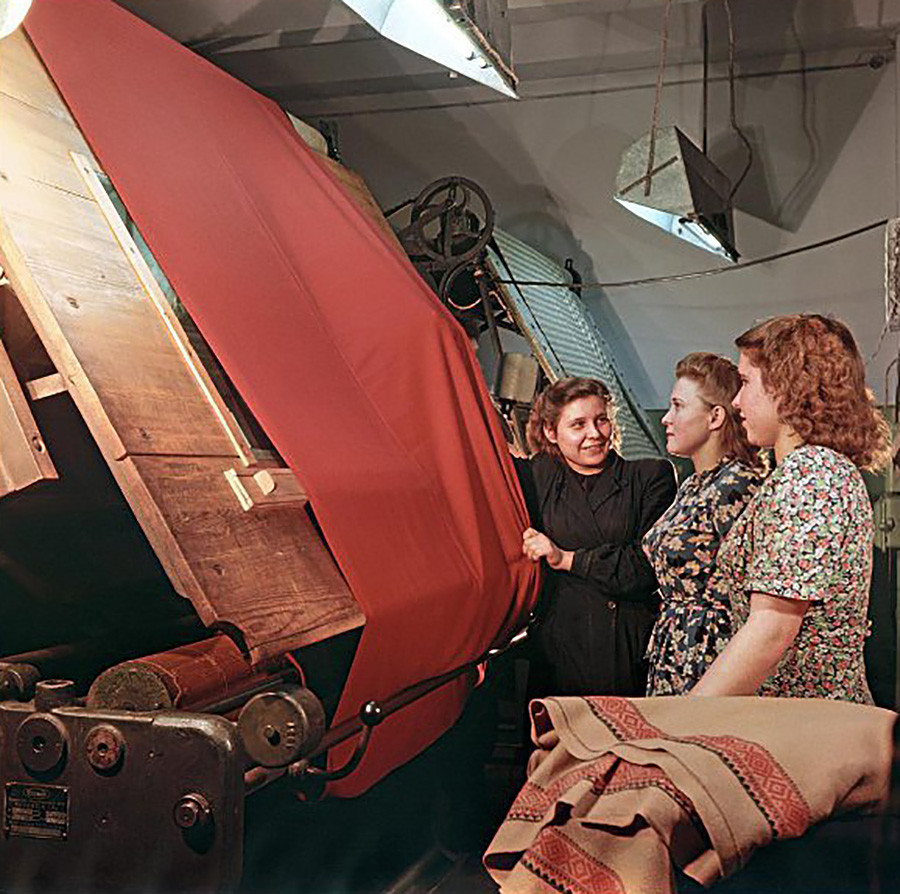
Fine-cloth plant, 1953
Mikhail Savin/MAMM/MDFIf using any of Russia Beyond's content, partly or in full, always provide an active hyperlink to the original material.
Subscribe
to our newsletter!
Get the week's best stories straight to your inbox